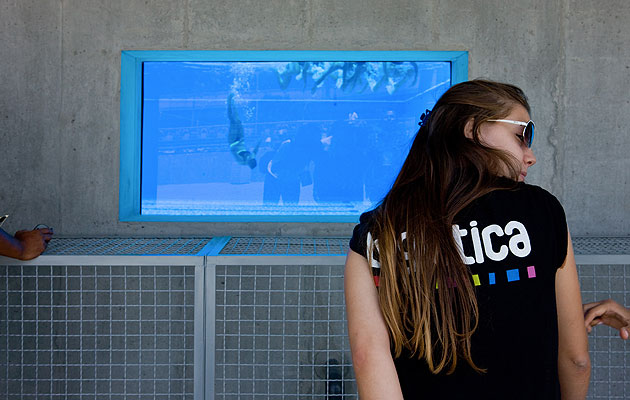|
|
||
|
Tectonic fragments collide in the valley of Medellín, Colombia, to form an aquatic centre by local practice Paisajes Emergentes. Designed for the 2010 South American Games, and now a public facility, this complex is the latest in a series of bold municipal projects initiated by the city’s progressive mayor, transforming this once notorious drug battleground into a safe and thriving capital. The ambitious complex houses a series of swimming pools scattered across a raw concrete landscape, fringed with wetland gardens and dramatically sliced by a series of snaking ramps, terraces and lightwells. Supporting functions are deftly swept beneath this dynamic carpet, forming a labyrinthine network of corridors and courtyards below. “We wanted to hide all of the changing rooms and technical facilities underneath the gardens,” says Paisajes Emergentes architect Lluis Callejas. “This leaves the upper level free for circulation and public terraces, providing a landscape of spectacle.” The cascading platforms and zigzag routes are clearly designed with occupation in mind, with low walls, benches and planters providing space for perching, sprawling and flirting – every surface is used by throngs of swimmers, spectators and sunbathers, young and old. In the shady passages below, windows puncture the walls of the pools, where loitering teens can gaze on the balletic synchronised swimmers above and parents can watch their children’s swimming lessons. These ramping routes, carved into the ground, are finished with rough, vertically striated concrete. The ceilings of the brooding undercroft are coffered with a triangular geometry that echoes the monolithic benches, as though these refined boulders have been hewn from the voids above. This is béton at its most brut, a beautifully robust solution for a city keen to forget its tumultuous past.
|
Image Iwan Baan
Words Oliver Wainwright |
|
|
||
|
|
||


















